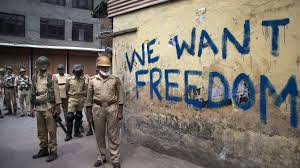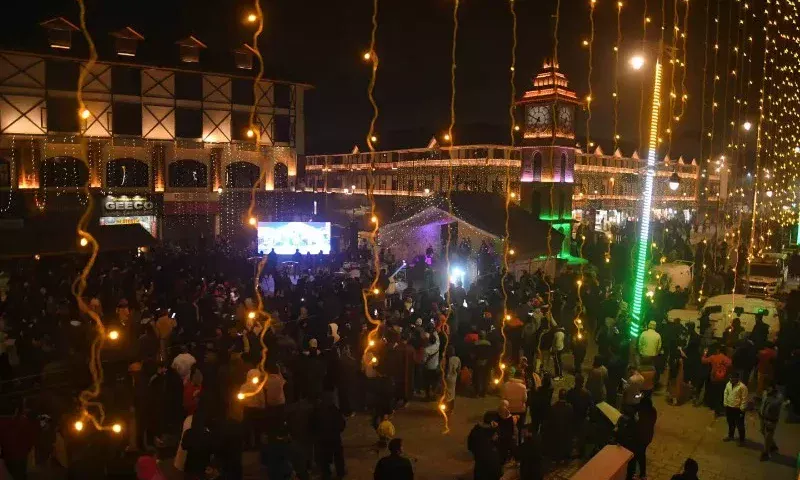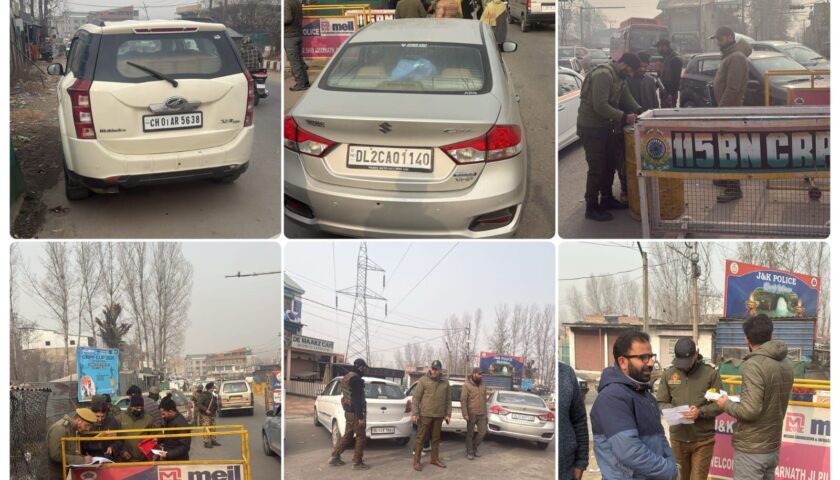It was well past midnight in the village of Balsoo when Numan Ashraf Bhat’s phone lit up with an urgent WhatsApp message: “Umar surrounded by forces.”
Umar Majid Ganai, one of the area’s most wanted militants, had built a loyal youth following in Kashmir, a Himalayan region disputed between India and Pakistan where violence has claimed tens of thousands of lives. Numan, a gangly 16-year-old, was one of his most enthusiastic supporters — all of the photos downloaded on his phone were of Mr. Ganai.
So when Numan learned last month that Mr. Ganai was holed up in a tiny hamlet, Indian security forces closing in, he jumped on his motorbike and sped through the biting cold to reach the house where several militants were trapped.
Hundreds of Kashmiri civilians had already gathered. They were forming a protective ring to block Indian officers from advancing, part of a new and often fatal development in the decades-long struggle over Kashmir.
Violence is rising again in the region, where India has presided over a bloody campaign to hunt down those fighting a quixotic battle for independence. This year, according to police officials in Kashmir, Indian security forces have killed over 240 militants, the highest annual toll in more than a decade.
But along with the combatants’ deaths has come a new set of casualties: those of civilians who try to defend them. Gone are the days when the sight of an armored vehicle was enough to send entire villages into hiding. Now, civilians are rushing in front of the heavily armed trucks, using stones and their own bodies to try to block security forces.
Last week, seven civilians were killed after inserting themselves between militants and advancing officers.
“This is a new phenomenon,” said Sheikh Showkat Hussain, an international law professor at the Central University of Kashmir. “Civilians have always supported militants, but never with such conviction.”
This year, rights groups say, at least 148 civilians have been killed. Many were teenagers.
For decades, Hindu-majority India and Muslim-majority Pakistan have fought for control of Kashmir, sending millions of troops to square off along a disputed border hundreds of miles long.
In June, the United Nations released its first report on atrocities committed in Kashmir, calling for an international investigation into reports of sexual violence and torture. Indian security forces were sharply criticized for using excessive force on protesters, and particularly for firing shotguns into crowds, with hundreds of people struck in the eyes by pellets, leaving many of them blind.
India has pushed back against criticism of its methods. After the release of the United Nations report, the government called its contents “fallacious, tendentious and motivated.” Last year, Bipin Rawat, the Indian Army chief, said that people who “obstruct our operations” would be “treated as over-ground workers” — in other words, collaborators.
In 2016, the nature of civilian protests took a turn when Burhan Muzaffar Wani, a charismatic militant leader with a vast following on social media, was fatally shot in the Indian-administered part of Kashmir.
Kashmiris poured into homegrown militant groups like Hizbul Mujahideen. A network of locals who fed information to Indian intelligence officers temporarily broke down, allowing the number of militants to swell.
Pakistan’s role in supplying arms and recruits also receded, according to Kashmiri police officials, though Western intelligence officers say Pakistan is still actively supporting several militant groups.
Yasin Malik, a separatist leader who led an armed struggle against Indian security forces in the late 1980s and early 1990s, said the ranks of militant groups would continue to grow. A peaceful resolution in Kashmir became impossible, he said, when locals who tried demonstrating against the police continued to meet “brute force.”
“There is no space for a nonviolent political movement,” he said. “They are fighting because everyone has failed them.”
Of the approximately 250 known militants today, Kashmiri police say only 50 or so are from Pakistan. Most of the rest are poorly trained and have never left the Kashmir Valley. Though Indian security forces stationed in the valley have cracked down on armed insurgents, outnumbering the militants 1,000 to one, they are struggling to stem fresh recruitment.
Of the approximately 250 known militants today, Kashmiri police say only 50 or so are from Pakistan. Most of the rest are poorly trained and have never left the Kashmir Valley. Though Indian security forces stationed in the valley have cracked down on armed insurgents, outnumbering the militants 1,000 to one, they are struggling to stem fresh recruitment.
Numan Ashraf, a high school student, knew the risks of traveling those 15 miles to the village of Batgund, where Mr. Ganai was holed up in a house with other militants. His friendship with a wanted militant is a window into the growing civilian support for the homegrown fighters — and the deadly risks of such a relationship.
Numan, the oldest of three sons of a woodcutter, was born into a tense security situation and seemed acutely aware of it. Every summer, his family said, Numan and his friends dressed up as militants or Indian army officers, hid behind apple trees and fired fake wooden guns at each other.
Over the years, Numan also met Mr. Ganai, 27, several times, his friends said. They played cricket and went swimming in a pond together. During a chaotic funeral for another militant, Numan spotted Mr. Ganai and hugged him.
It is unclear who told the Indian authorities where to find Mr. Ganai, a senior member of Hizbul Mujahideen who had avoided detection for several years. The authorities said the list of charges against him was long. Last year, he was implicated in killing several police officers guarding a bank’s cash van.
In the early morning of Nov. 25, hundreds of Indian army and police officers blocked roads leading into Batgund with barbed wire. A crowd of civilians gathered, hurling stones from narrow alleys and screaming anti-India slogans from their balconies. The authorities fired tear gas canisters, creating a choking, eye-stinging pall of gray smoke.
Indian security forces had the house where Mr. Ganai was hiding out completely surrounded. By the time Numan reached Batgund at 7:30 a.m., the security officers had already killed several insurgents. Mr. Ganai was one of the last holdouts.
Young protesters, desperate to save the fighters, tried to drive the Indian forces back or create enough chaos to distract them to give the last militants a chance to slip away. It had happened before that insurgents melted into a sea of civilians and vanished right in front of security officers.
Mr. Ashraf and several friends moved closer. They entered a small, relatively unguarded lane in the house’s courtyard, looking for a way to help Mr. Ganai escape. The scene was quiet for a moment.
Numan shouted, “Umar, come out!”
Gunfire rang out. Numan clutched his chest. “I am hit! It is burning inside,” he told his friends as they carried his bleeding body to a motorbike.
Numan died on the way to the hospital. Later that morning, Mr. Ganai was shot dead.
When asked about the shooting, Indian officials said it had been an accident; Numan had been too close to the militants.
“Who wants to kill a young boy?” asked Swayam Prakash Pani, the area’s police chief, who was not present for the shooting but had been briefed about it.
Several witnesses contested that claim, saying they had seen a soldier pointing a gun at Numan from a balcony and that the shooting had been deliberate.
Over the next couple of days, thousands of mourners gathered for a marathon of funerals, one after the other, spreading the grief. In Balsoo, the streets were so clogged with people that prayers for Numan were divided into four sessions.
Mohammad Ashraf Bhat, tall and broad-shouldered, said he could not fault his son for trying to protect Mr. Ganai.
“The mind says if you jump into fire, you will burn,” he said. “But love doesn’t understand that. If he would not have died like this, he would have died as a militant.”
Two days after Numan’s death, his younger brother, Nadeem, 14, took his place. He traveled to a village near Balsoo where more militants were trapped. He picked up stones and threw them at police officers, who shot a pellet into his leg.
That night, he did not eat or tell his parents what had happened. A single emotion consumed him: passion.
“The sentiment of freedom is in our blood,” he said. “It will outlive us.”




